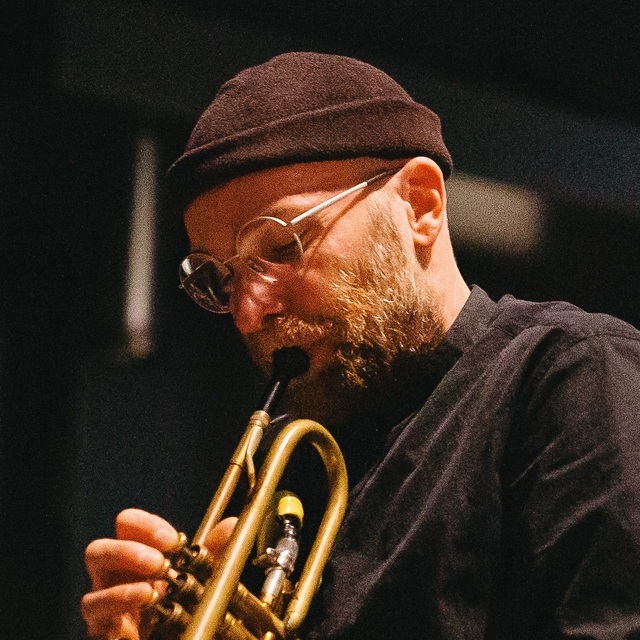Noel Meek's 2024 SOUNZ Community Commission how libraries think premieres this week at Ōtautahi's Tūranga Library at 7pm, Saturday 25 May as part of Tiny Fest. Click here to RSVP. We caught up with Noel to learn more about this exciting new conceptual and exploratory work.
Tūranga is the central library of Ngā Kete Wānanga o Ōtautahi. It's a post-quake build and currently the largest public library in Aotearoa. It's a beautiful building housing an amazing public collection, one that goes, as most libraries do now, well beyond the books that sit on its many shelves. Its name and cultural narrative were gifted by Te Ngāi Tūāhuriri and that space continues to be held by a Māori and Multicultural Services team based in the building. I've been working at Tūranga for the last couple of years and this cultural grounding has been a really unique aspect of the mahi. I foreground all of this because the ideas behind How Libraries Think are deeply influenced by indigenous cosmologies, initially by Eduardo Kohn's book on the Runa of Ecuador’s Upper Amazon, How Forests Think , but also in particular by my encounters and friendships within te ao Māori. When talking about "performers" I'm not just thinking about the humans who will read my score, but about a multi-being space, where books, shelves, artworks, computers, and of course the building itself, are all contributors to the phenomenological experience of the music. In some cases this may be quite clear, as in instructions I've written for soundmaking directly with books and other library collection objects, in others it's more of an intellectual and, I hope, spiritual exercise in recognising the sovereignty of all things.
You have been working with a more unique group of performers for this piece - librarian/musicians! How has it been working with them to put together this piece?
Unfortunately, Librarians are very busy people! I won't have the opportunity to do hands-on work with Libraries staff until the day of the concert. This doesn't worry me, as I've done extensive musical work in the past with amateur, untrained, and otherwise unprepared performers and have scored the piece accordingly. I am also operating from my embedded position in the Library network - from lived knowledge of staff experience and skills. I have been having much kōrero with my colleagues around the project and I'm answering many questions. Some Library staff may be quite shy, but they are certainly intellectually curious.
Reflecting on your collaboration with the performers for 'How Libraries Think,' what aspects of this experience have been most meaningful to you as a composer, and how do you envision this piece contributing to the cultural dialogue surrounding libraries and their diverse communities?
As said, I won't collaborate directly with the humans of the project until the day of the concert, but I have had the opportunity to think, explore, and attempt to kōrero with the non-human performers. Spending time developing a language of musical gestures that applies to the collection has meant much time spent with library objects, thinking and working. I have also explored Tūranga thoroughly as part of my research, its bright public spaces and its hidden rooms. There are some remarkable sonic landscapes throughout the building, reflecting the multi-being assemblages that give the place life. I'm not just talking about the sounds of humans interacting with books, but also the sounds of the internal organs of Tūranga, of pipes and air conditioning ducts reacting to the presence of humans, to the weather, to the ingress of wild animals into its dark corners. Ther server rooms in particular are stunning sonic spaces, literally hundreds of individual hums backgrounded by the deep sonorities of water and air travelling throughout. Of course, many of these sounds will not be there during the concert as it occurs after hours and much of the building will be empty and powered down, but I hope the composition reflects some of this complexity of musical relations.
In terms of a wider cultural dialogue, I refer back to the indigenous cosmologies that inspired the piece. As Kohn describes it, the Runa's culture calls into question many received Western assumptions about personhood, animacy, and the division of beings. This indigenous population doesn't see the hard clear boundaries that Western thought has taught many of us. As we are learning in Aotearoa, challenging these assumptions can be part of a larger healthier change in society. Our recognition of the sovereignty of the Whanganui river was a world first in settler-indigenous relations, and Aotearoa has a distinct role to play on the international scene in this respect. We are contributing to a change in cosmological thought worldwide, one inspired by, but not limited to indigenous worldviews. I hope that this composition, and my other work, might also be a contribution towards this change in cosmology.
I wanted to add one more thing - that there is definitely an element of humour in all this, in that way that the best humour is deadly serious. There's an element of absurdity in what I'm proposing, but absurdity with a clear and urgent reason.

